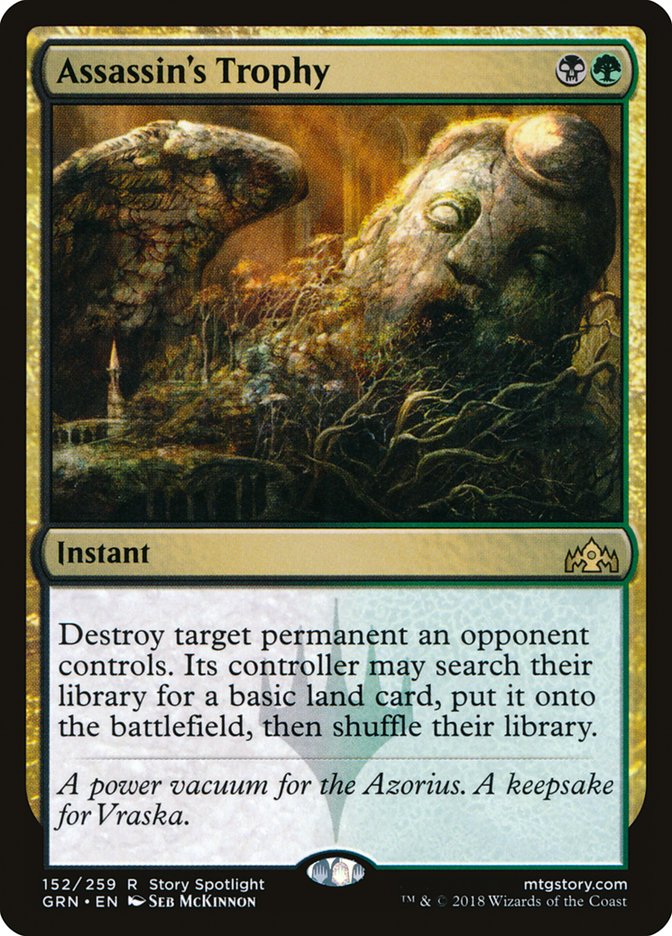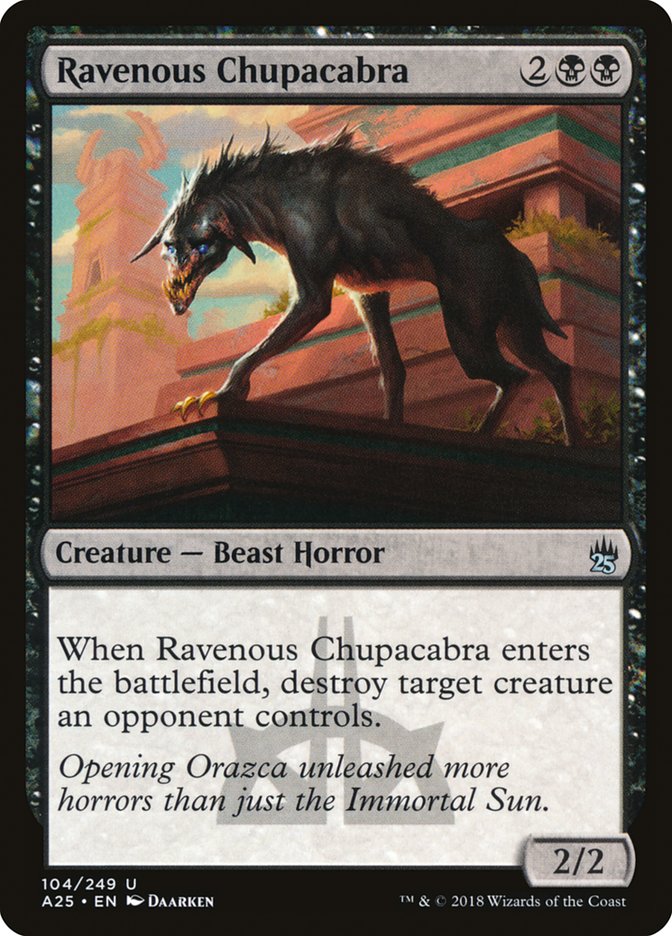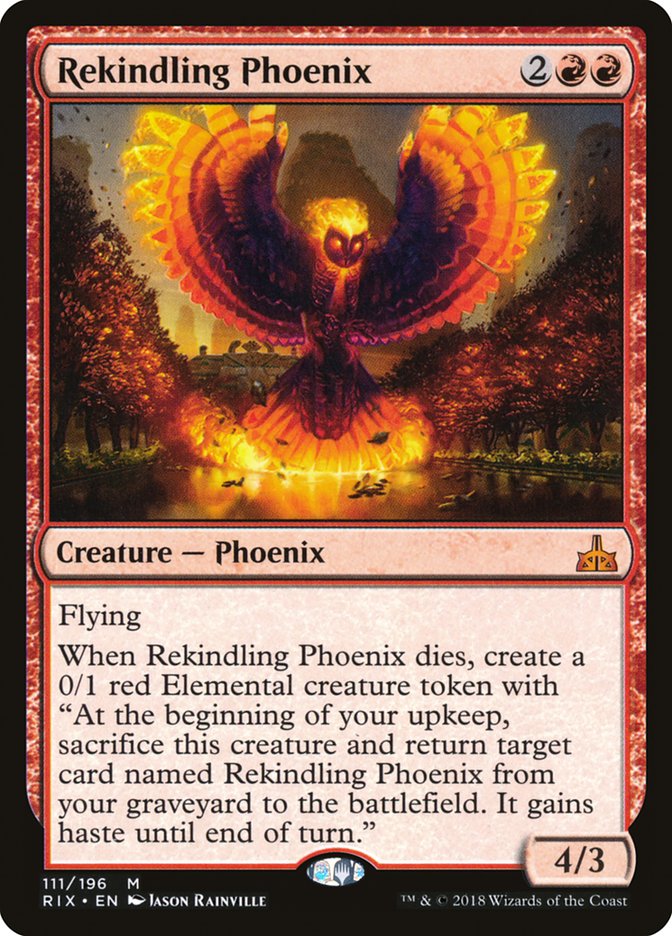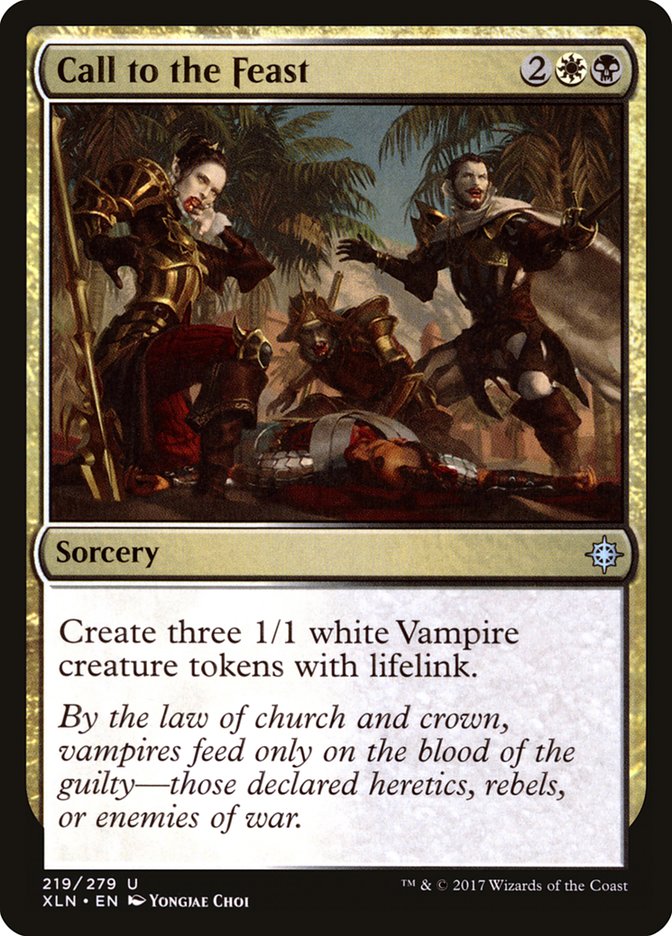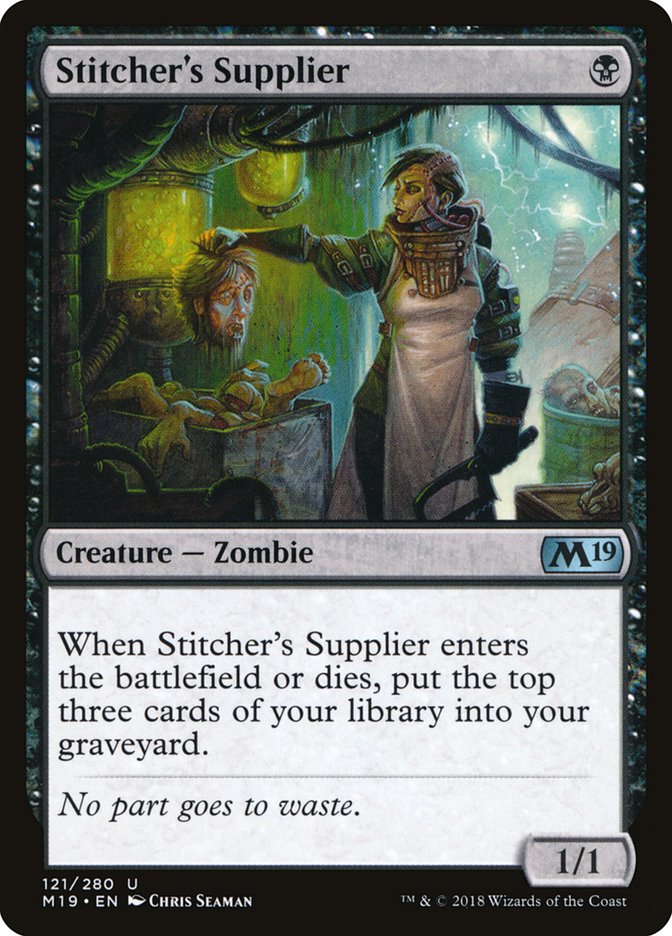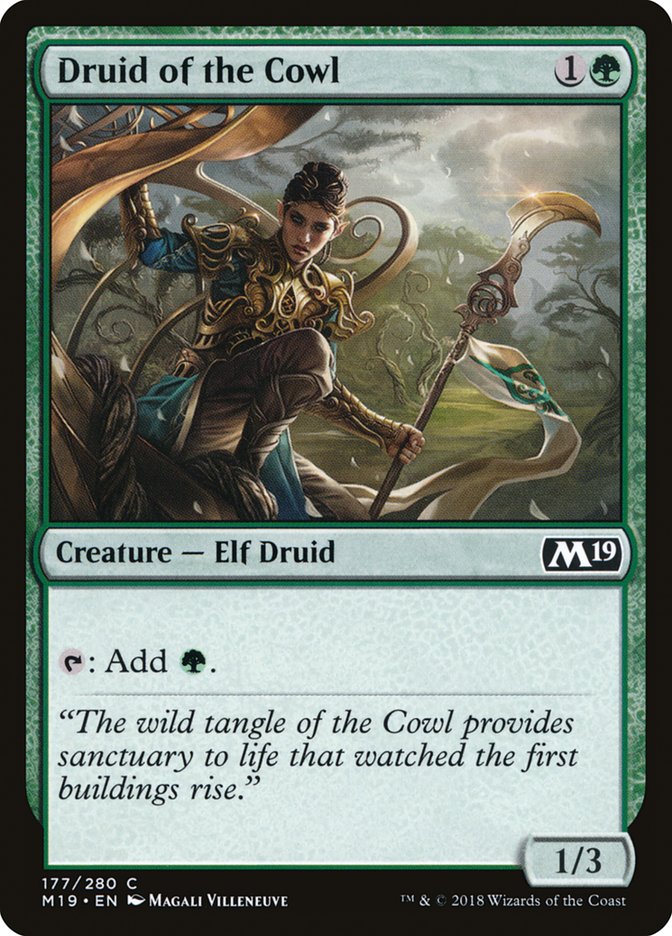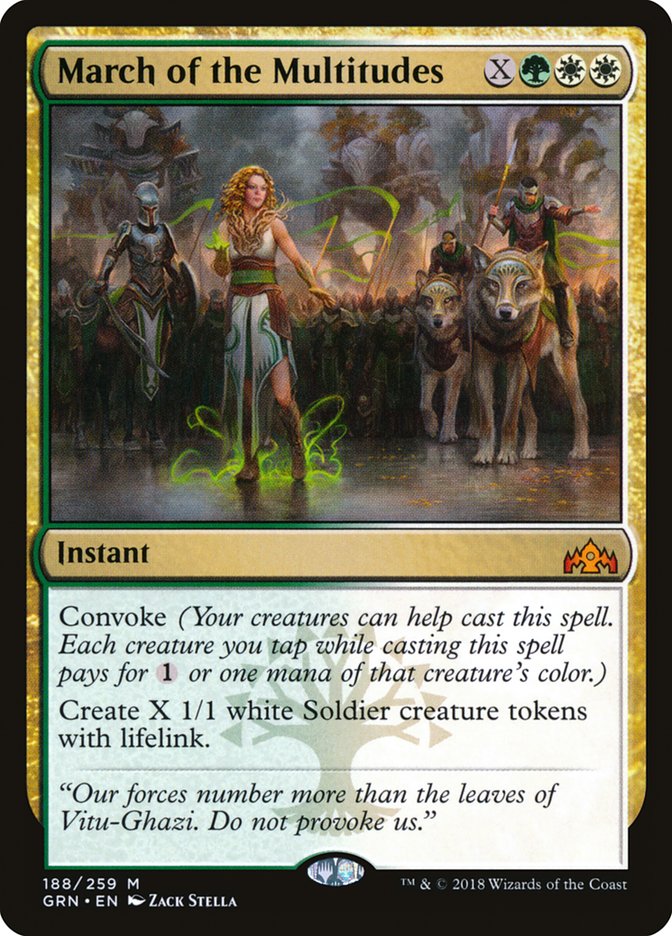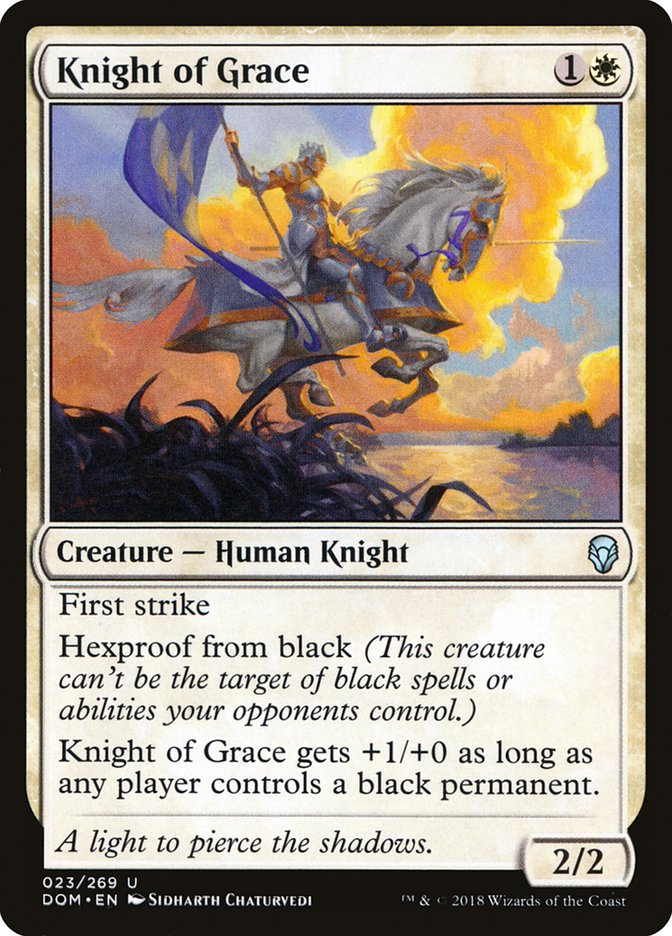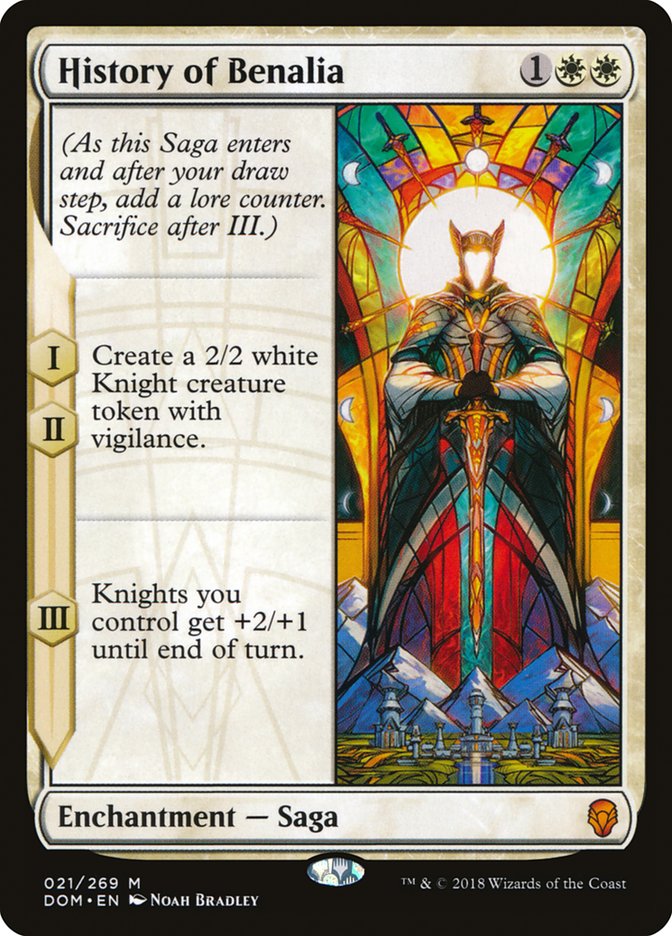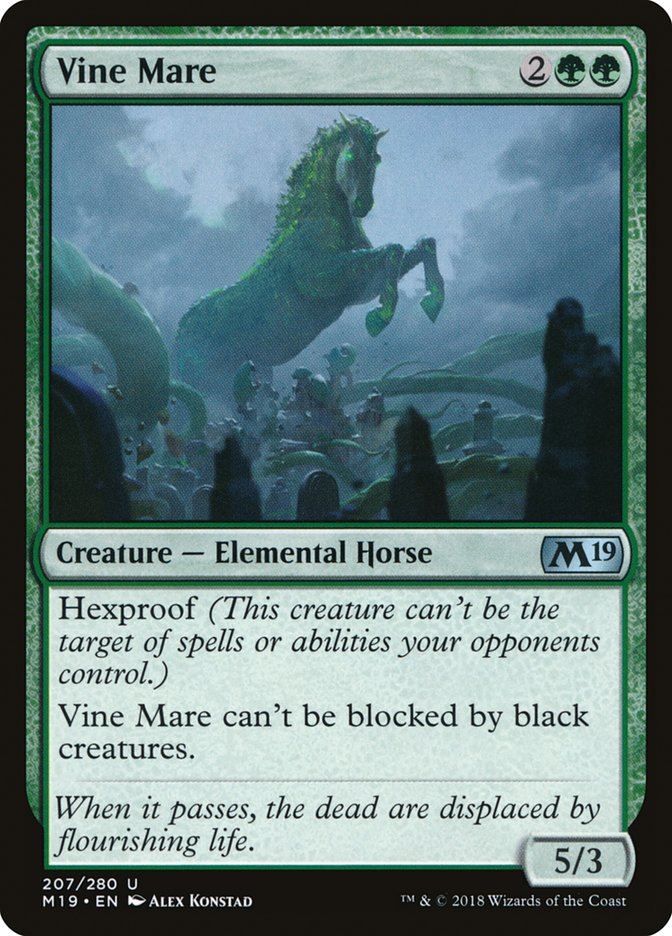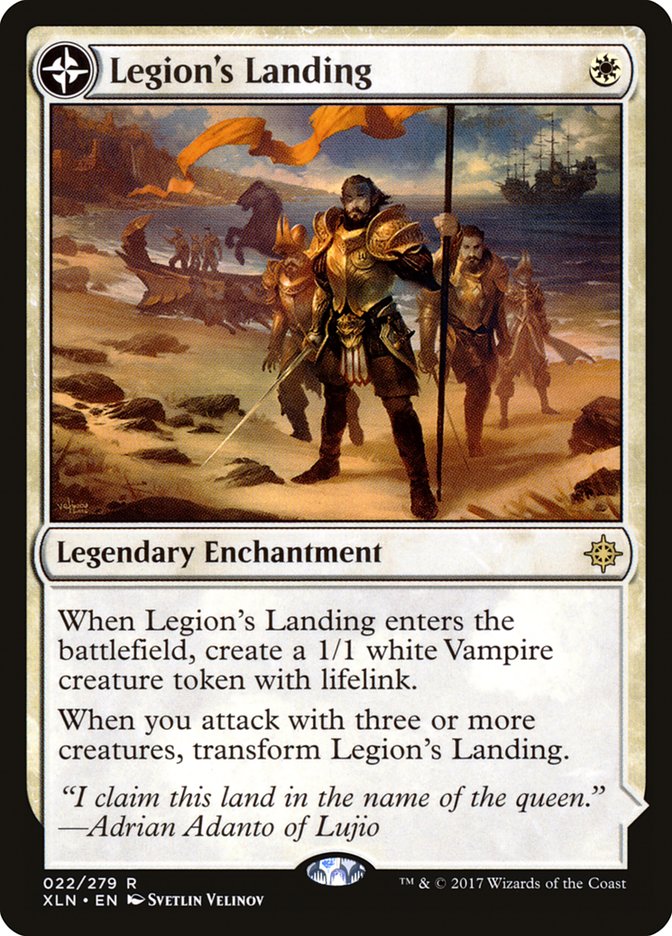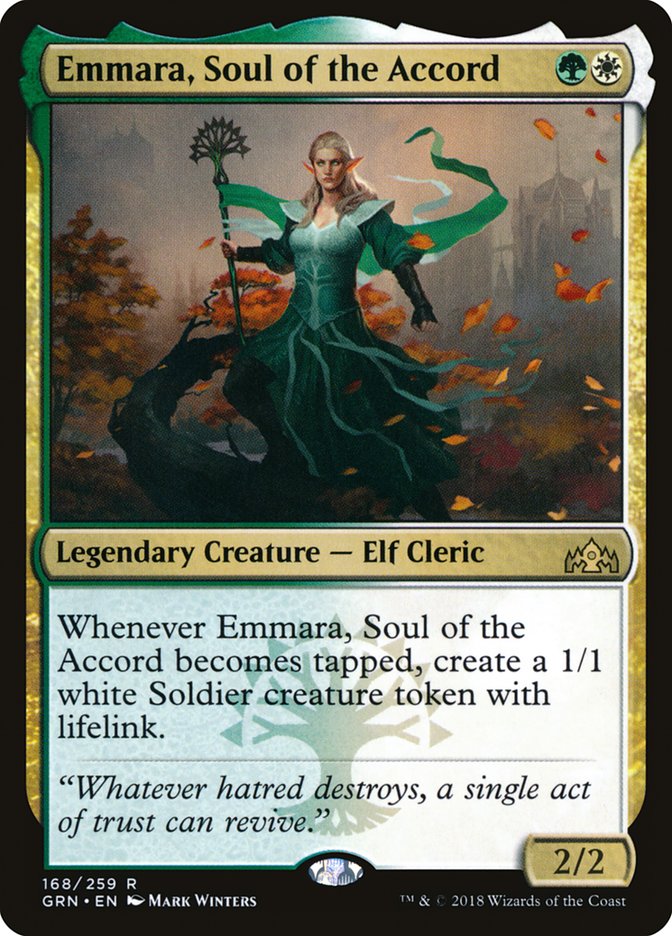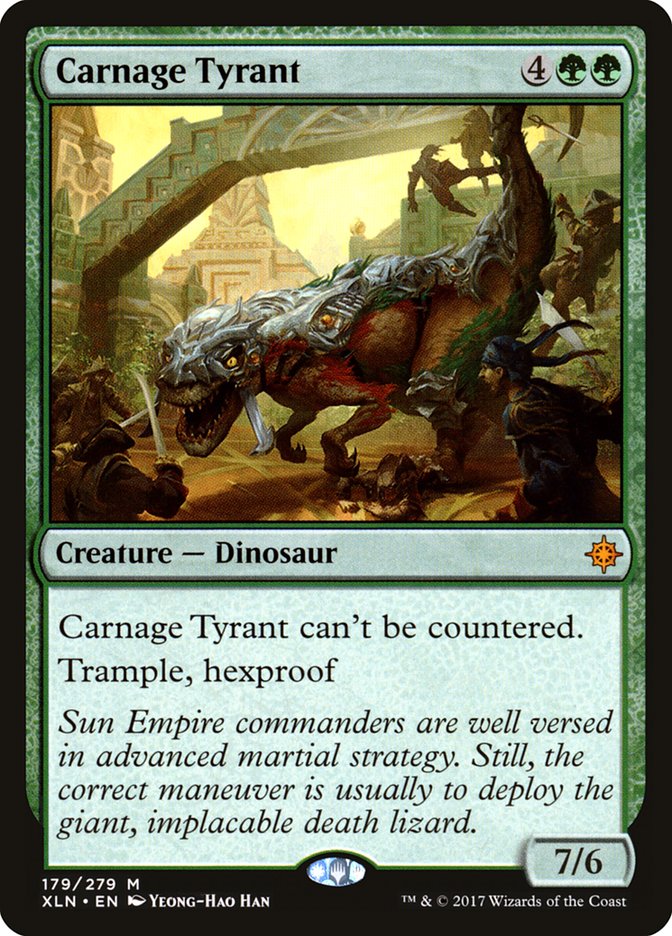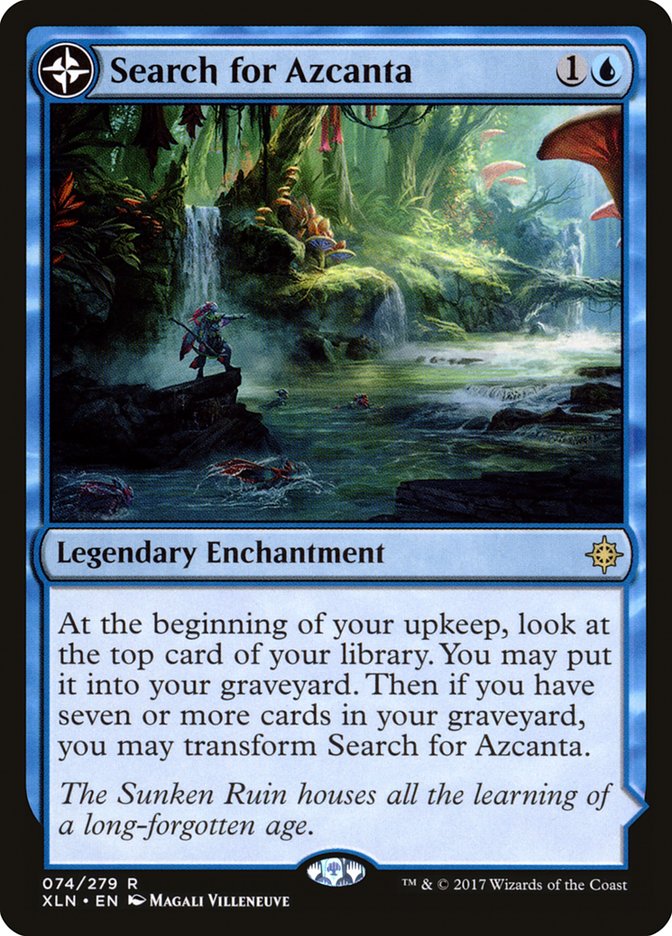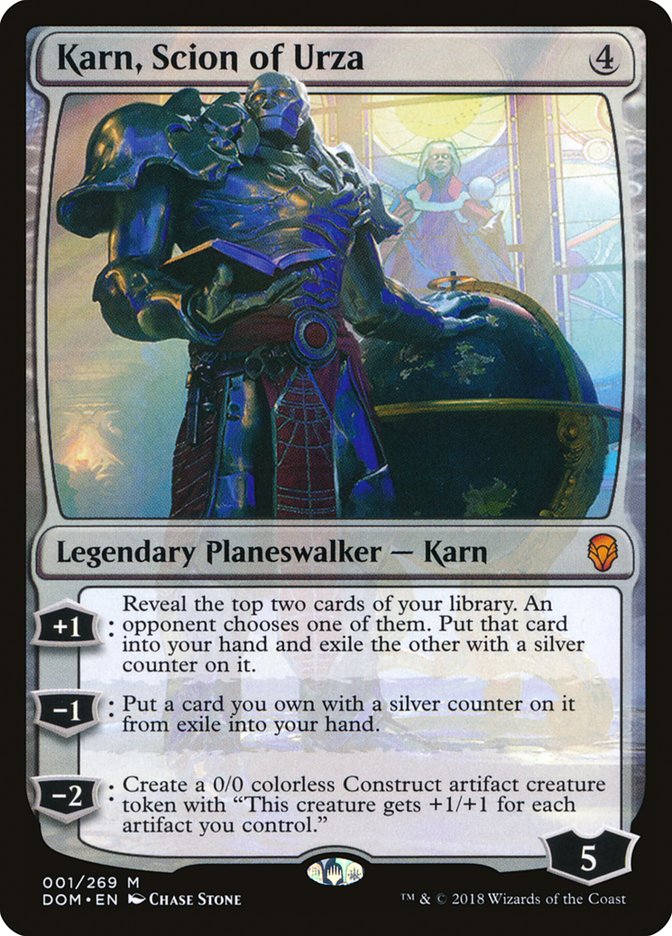Monday was a good day for the Golgari guild.
The following day gave us an
article
from Jadine Klomparens, an
article
from Todd Stevens, and an
article
from Bryan Gottlieb on playing with Assassin’s Trophy.
As of writing this article, people aren’t investing that much effort into
thinking about how they’re going to beat Assassin’s Trophy.
When looking at how to beat any kind of interaction, there are generally
two approaches:
- Reduce its efficacy
- Sidestep it
Assassin’s Trophy doesn’t exactly make it easy to do, but there are a few
words on the card that clue us in on how we can be doing this.
“Destroy target permanent
an opponent controls. Its controller may search their library for a
basic land card, put it onto the battlefield, then shuffle their
library.”
The first three words in the text box tell us three things about how we can
work to beat it. Make “destroy” a bad word, make it so “targeting” isn’t
possible, or using a strategy that doesn’t care about losing a single
permanent.
Are these doable? Absolutely! Older formats have the luxury of a deep card
pool and the ability to investigate things that Assassin’s Trophy will
embarrass. It will take time to adapt, but the possibility is there. In
Modern, for example, things may look scary, even with control decks leaning
into Teferi, Hero of Dominaria and Search for Azcanta to close out games,
but there are other ways to not be particularly invested in the permanents
you play:
I view mtg spoilers through a pretty narrow frame these days,
but uh, PSA: If you staple a rampant growth onto all your abrupt decays you
are never beating goblin electromancer again.— Andrew
Shrout (@JohnnyHSauceMTG) September
10, 2018
Standard doesn’t quite have the same luxury, doubly so right after a
rotation. “Don’t play important permanents” is fairly difficult in a format
defined by creatures, Oblivion Ring effects, and Planeswalkers. That
doesn’t mean it’s impossible, but identifying the best ways to beat the
effect are going to take a different shape.
In a more permanent-based format like Standard, the idea is to look for
things that fall into one of the following categories:
- Can’t be targeted by Assassin’s Trophy
- Doesn’t care if they’re targeted by Assassin’s Trophy
The first category is fairly easy to identify: What can’t be targeted by
Assassin’s Trophy?

Hexproof and shroud things have auto-protection from removal. Got it. Good
talk.
What doesn’t care if it’s targeted by Assassin’s Trophy?
Things that give you instant value.
Permanents that provide a resource as soon as they hit the battlefield for
a fairly low cost are going to be fantastic against the Trophy. This can
mean something that makes another body, destroys a permanent, draws cards,
or more. It just needs to generate value that makes a one-for-one exchange
bad for the opponent.
Cards that don’t stay destroyed.
Rekindling Phoenix is the easiest example of this in current Standard as a
playable something that recurs itself frequently, but we’ve seen cards in
the vein of Prized Amalgam and Vengevine that make Terminate effects
horrible.
Cards that create multiple permanents are fantastic.
This is already somewhat implied under Ravenous Chupacabra, but token
producers really deserve their own field. To piggyback on Modern lingo,
using a removal spell on a single Spirit token that was produced by
Lingering Souls is considered to be trading a card for 25% of a card. That
holds water with Assassin’s Trophy as well. Being forced into a position in
which an Assassin’s Trophy is destroying one of the Vampire tokens is
effectively trading a card for 33% of a card (and giving the opponent an
extra land for their trouble).
Things that want to be killed.
Putting cards on the table that convince the opponent not to play their
cards is a winning strategy. Who knew?
Permanents that have “produce a single mana at a time” as their MO.
There’s the obvious implication that having power and toughness is
generally going to be worth more than not having those things, but this
idea here is that mana accelerants are going to be good against the card,
as long as they’re casting other cards that are also good against spot
removal.
Taking all of this into account, take a look at my starting place for Guilds of Ravnica Standard:
Creatures (18)
Lands (24)
Spells (18)

There’s a whole lot of “we don’t care about Assassin’s Trophy” in this
list. The best targets for the spell are bad exchanges on mana, and most of
the other cards fit into one of the previously mentioned camps.
Let’s talk about this card and why it’s good before and after Assassin’s
Trophy.
To parrot the earlier point about instant value, when cast before a copy of
Trophy, March of the Multitudes provides a pile of creature tokens that
embarrass spot removal spells.
When the Trophy precedes the March? It makes March better. Every copy of
Assassin’s Trophy that the opponent fires off makes all the big mana spells
in the format better. Unlike Path to Exile, there isn’t a “wait until their
upkeep so they get the land tapped” trick. Whenever they’re casting
Assassin’s Trophy, we’re getting to use the mana instantly.
“But Emma, Goblin Chain-“
Stop.
Trust me. I know about Goblin Chainwhirler.
Some cards in this deck can be weak to Goblin Chainwhirler on their own.
But what about the rest of the deck?
These cards are all fantastic against red. Clogging up the ground while
also being great at turning the corner is a prime way to trump what
creature-based red decks are doing.
On top of that, what if they don’t have Goblin Chainwhirler?
One word: lifelink.
Imagining a world in which this deck ends up dominating the Golgari decks
and the red decks isn’t particularly difficult.
The best and worst thing about the deck is that it’s pretty straightforward
about what it’s interested in doing: playing creatures and eventually
killing with them. Attacking in the earlier stages of a format is a great
place to be, and having a way to go over the top of other decks trying to
attack is an incredibly intuitive way to be successful.
This deck in general is built to have game specifically against Assassin’s
Trophy and Goblin Chainwhirler for the reasons listed above, but what if
it’s specifically control decks that begin adopting Trophy?
Creatures (23)
- 4 Llanowar Elves
- 4 Druid of the Cowl
- 4 Carnage Tyrant
- 3 Thrashing Brontodon
- 4 Knight of Grace
- 4 Vine Mare
Lands (25)
Spells (12)

The mana in the deck is admittedly shaky – compensating for both Llanowar
Elves and History of Benalia is not easy – but this version of the deck is
doing a few things better than the previous version:
This version of the deck is making better use of the mana given out by
cards like Assassin’s Trophy and Settle the Wreckage. Rather than trying to
win in the mid-game by playing a pile of efficiently two and three-mana
cards or sinking a ton of resources into going building over time, this
deck is playing with a handful of hammers.
Speaking of hammers, these are a great pair of cards to have against
anything looking to use spot removal as it is. The deck lacks concrete ways
to accrue tons of card advantage but makes up for it in raw stats, and by
extension, closing power.
Another nice thing about basing the deck in green, rather than white, is
that it opens up a black splash for some nice sideboard options:
Creatures (23)
- 2 Llanowar Elves
- 4 Druid of the Cowl
- 4 Carnage Tyrant
- 2 Thrashing Brontodon
- 4 Knight of Grace
- 3 Knight of Malice
- 4 Vine Mare
Lands (25)
Spells (12)
Sideboard

Something that Todd Stevens touched on in
his recent article about Bant Midrange
in Modern is having the ability to swerve into things that people don’t
expect, and this deck is playing to that in a big way. It’s likely the mana
is stretched too thin to support Llanowar Elves in this version of the
deck, but the idea of the deck is this: Play a reasonably proactive core,
and then find a way to play the best haymakers to counter the strategies
you’re expecting to play against.
This ensures that you’ll be able to kill the opponent if you play against
something you weren’t expecting –
say, if something like a pile of blue artifacts comes out of left field
– all while being able to slam the door in the face of what people are
going to migrate towards during the first week of Standard. This list in
particular is a little weak to red decks, and as a result has two of the
most powerful cards to bring in against aggressive creature decks in Lyra
Dawnbringer and Settle the Wreckage.
Looking past those two sideboard cards, Duress is a little unsurprising,
but wait–
We also have Assassin’s Trophy.
Even if Assassin’s Trophy isn’t the best answer to some of the
problem
cards
that control will bring to the table, it’s incredible at dealing with the
card advantage engines that the control strategies will be bringing to the
table.
When the Abzan deck itself is looking to only develop a single threat or
two into sweepers to avoid getting blown out, it’s doing so in order to
avoid letting the traditional control decks getting a bunch of card
advantage by trading a single sweeper for several cards. This requires the
control decks to use some sort of draw engine to keep resources flowing.
With Glimmer of Genius and Hieroglyphic Illumination on the way out,
Assassin’s Trophy can even do something as simple as serve a role in the
sideboard of a midrange deck to prevent control from turning the corner.
One of the most important aspects of trying to beat something is
understanding that incorporating the very tool you’re trying to invalidate
can be a natural progression for things. Playing our own copies of Trophy
doesn’t make theirs any better, and believe you me: I don’t plan on giving
their copies an inch.


